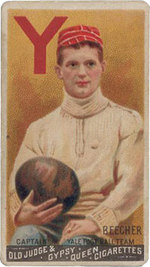Football Cards
Many an adult can remember his or her childhood and the fun that collecting football cards provided. While most of the football cards from the 1980s were overproduced, there are many that are worth money.
I can remember collecting cards during the mid-to-late 1980s. These were the days of Joe Gibbs as coach of the Washington Redskins. They were quite good at the time, so I gravitated to them for some reason. I really enjoyed finding an Art Monk or John Riggins card in a wax or rack pack. Of course, the cards that I wanted seemed to show up much less frequently than did the Bubby Bristers of the world (Pittsburgh Steelers fans will remember this name well).
Regardless, there was little that brought more joy than opening up a pack and seeing what stars showed up in the randomness that was the wax pack. The worst part of these wax packs was the Topps gum searing itself into the back of the best card in the lot. Here are some good tips when it comes to getting the best football cards.
Look for Vintage Cards
Football cards seem to be much more scarce than are their baseball counterparts. Baseball cards go back to the nineteenth century with the Old Judge set. The early twentieth century brought about the T-206 white border cards, the most famous of which is the Honus Wagner that brings hundreds of thousands per card. Baseball cards have been produced for most of the years, with the exception of the 1920s and 1930s.
Football cards did not burst onto the scene until much later. Part of this is the later start of the National Football League. Part is related to the status of baseball as the national pastime.
The earliest football card set was the 1935 National Chicle set (although college players had shown up on tobacco cards earlier). The entire set numbered only 36 cards and had such stars as Knute Rockne and Bronco Nagurski. The National Chicle cards are relatively rare today and well-preserved specimens can bring into the hundreds or even thousands of dollars.
In the late 1940s, Bowman and Leaf began producing cards. Leaf only put out two sets. Bowman continued producing sets each year until being bought out by Topps in 1955. Topps produced its first set of football cards in 1956 and has continued to do so in the years since.
The older the card, the more likely it is to be rare. The better the condition of the card, the more likely it is to be worth a nice sum of money. Finding a vintage card that has been graded by PSA or another reputable grading company will verify the authenticity and condition of a card. This process makes the card much more marketable.

Newer Football Cards Are Likely to Be Mass Produced
Of course, all football cards are mass produced with modern printing processes. The number of cards produced in a year expanded quite extensively in the 1980s. It was also at this time that people started to seriously take care of their cards and view them as a possible investment.
Football cards (or any collectible card, for that matter) tend to follow the laws of supply and demand. There are relatively few 1935 National Chicle Knute Rocknes around. People find them desirable. Therefore, they will be willing to pay a large amount of money for these cards. On the other hand, a 1990 Bubby Brister would be quite available. Also, there is little demand for this card (sorry, Bubby). Therefore, the card might go for a nickel, while the Rockne card might bring thousands if the condition is good.
There are exceptions to the general rule in regard to the mass production of the 1980s and early 1990s. The 1981 Joe Montana rookie card will bring quite a bit of money. A card in near mint condition might bring a few hundred. The same is true for the 1984 Dan Marino or the 1984 John Elway. Both are rookie cards depicting award-winning Hall of Fame quarterbacks.
Rookie Cards Will Typically Be Worth the Most
When looking to find the best value in football cards, rookie cards are the best option. Rookie cards will possibly bring more than 10 times the amount of the second-year cards of the same player. Rookie cards are the most desirable, but it is important to keep star players. For example, a Tony Mandarich or Brian Bosworth rookie card will not be as impressive as a Joe Montana or Terry Bradshaw.
Where to Get Football Cards
Those who want to buy new cards can find them at just about any retailer or grocery store. Walmart and Target both have large sections dedicated to sports and nonsports cards. Additionally, larger cities are likely to have hobby stores that will have a large selection of new cards. The options will range from the standard Topps sets and the higher-end Topps Chrome cards.
Getting older cards can be more difficult. There is the possibility of finding old cards at a yard sale if a parent is getting rid of their adult kids' cards. Most of these cards will probably not be in the best shape.
eBay is a great place to buy older cards. Many of these cards for sale or auction are professionally graded. Additionally, it is possible to get unopened wax or cello pack that at times date back to the 1960s or 1970s. Of course, these unopened packs are a pig in a poke. Even though there may not be many great cards available, at least they should be in great shape, except for the card that has been up against a piece of Topps gum for the past 40 years.
Card collecting can be a great hobby. Dads can get their kids involved, and the process can be a great opportunity to spend time together. Adults can relive their childhood while finding the many different cards that are out there. Opening a 1984 wax pack and finding a Dan Marino rookie (which I could never find in my own packs) is sure to bring a great rush.








